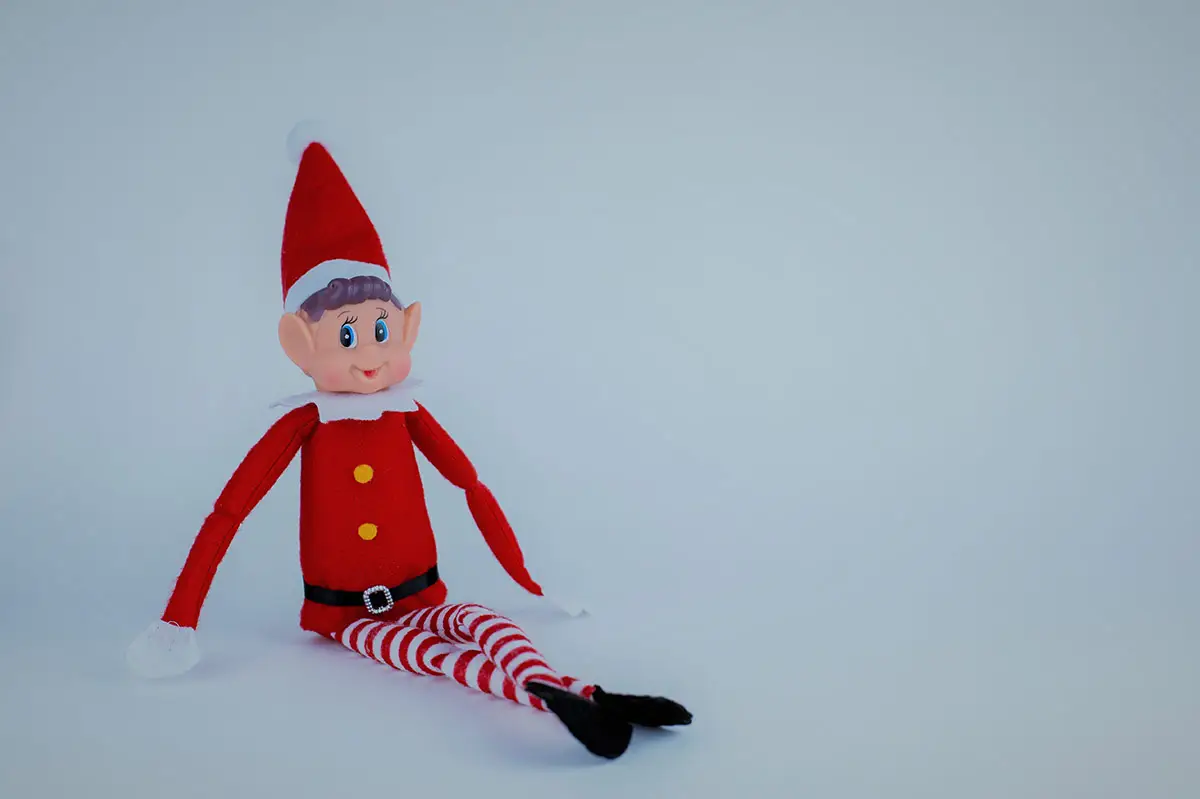Have the kids in your family become hooked on having an Elf on A Shelf in the run-up to Christmas?
It’s a tradition that has crossed the Atlantic and involves a small toy elf who appears in homes on 1 December.
Usually, he arrives with a note, telling children his name and reminding them that he’ll be reporting back to Santa on their behaviour in the run up to the magic of Christmas Eve!
However, while the children are expected to be good, the elf is mischievous, and each morning in December children can discover what mayhem he’s caused overnight.
After almost a whole month of thinking up new places to hide the elf and tricks for him to get up to, it’s no wonder parents are ready to pinch the sherry left out for Santa on Christmas Eve!
If you’re stuck for ideas, there are loads on the internet. Here are a few from Country Living.1
If you just need a break from the whole thing and want to give it a miss one night, there are always excuses for why he hasn’t moved. Maybe someone got out of bed or stayed awake too late (if Elf hears movement he won’t move for risk of being seen)?
Or in this strange year, perhaps you could just hide him away for a couple of days and say he’s gone to cause mischief at the homes of grandparents or cousins that you can’t meet up with at Christmas. Just make sure he wears a mask and self-quarantines when he gets back to yours!
Why is it that elves are so mischievous; and why do they get away with tricks that would count as “naughty” rather than “nice” if they were children?
The modern Elf on the Shelf ‘tradition’ smacks of commercialism and only goes back as far as a book published in the same name in 2005, but it has its roots in deeper mythology. The original idea of elves can be traced to Germanic tribes, who adopted the idea from original Norse mythology. Mythical dwarves came into our culture in much the same way.
Other cultures seem to have their own diminutive, and usually naughty, creatures that helped their ancestors to make sense of the vagaries and challenges of life. They range from Celtic fairies2 to Japanese Hitotsume-kozō3 , Chilean Trauco4, Irish Leprechauns5 and the Asian orang bunian6. More recently, in this country, we’ve had The Borrowers7 books and who can resist these stout-hearted little heroes! for Christmas! You can find lots of ideas for getting children reading at The Book Trust8.
What all these myths have in common is that you can’t just see these creatures whenever you want: you have to believe in the magic first!
- https://www.countryliving.com/diy-crafts/g22690552/funny-elf-on-the-shelf-ideas/
- https://en.wikipedia.org/wiki/Fairy
- https://en.wikipedia.org/wiki/Hitotsume-koz%C5%8D
- https://en.wikipedia.org/wiki/Trauco
- https://en.wikipedia.org/wiki/Leprechaun
- https://en.wikipedia.org/wiki/Orang_bunian
- https://www.booktrust.org.uk/book/t/the-borrowers/
- https://www.booktrust.org.uk/
FP1481-2020
The sole purpose of this article is to provide guidance on the issues covered. This article is not intended to give legal advice, and, accordingly, it should not be relied upon. It should not be regarded as a comprehensive statement of the law and/or market practice in this area. We make no claims as to the completeness or accuracy of the information contained herein or in the links which were live at the date of publication. You should not act upon (or should refrain from acting upon) information in this publication without first seeking specific legal and/or specialist advice. Arthur J. Gallagher Insurance Brokers Limited trading as Deacon accepts no liability for any inaccuracy, omission or mistake in this publication, nor will we be responsible for any loss which may be suffered as a result of any person relying on the information contained herein.
